The original Blasphemous was my first foray into the Soulslike genre that wasn’t a FromSoftware title. The Game Kitchen weren’t the first and definitely not the last to fuse the Metroidvania and Soulsborne formula. However, I do think they are the first to perfect the ever-growing genre, whilst seamlessly operating in their own lane. Blasphemous 2 is no different, as the developers have proven again that they’re one of the best to do it.
It’s been just under 4 years since the original release and in that time the genre has only become more saturated, so how has Blasphemous 2 carried on the Soulslike belief, whilst remaining a heretic? Let’s get into it.
Second Penance
We are back with The Penitent One, a soldier amongst many who vowed silence as their way of penance, revived from death on the battlefield to embark on another pilgrimage. This time, however, you’re no longer in the world of Cvstodia, giving you a whole new twisted land to explore. This is perfect for someone who’s not played the original as there’s no continuous reference to the previous story. With that said, if you have played the original and also finished the free Wounds of Eventide DLC, you will be delighted.
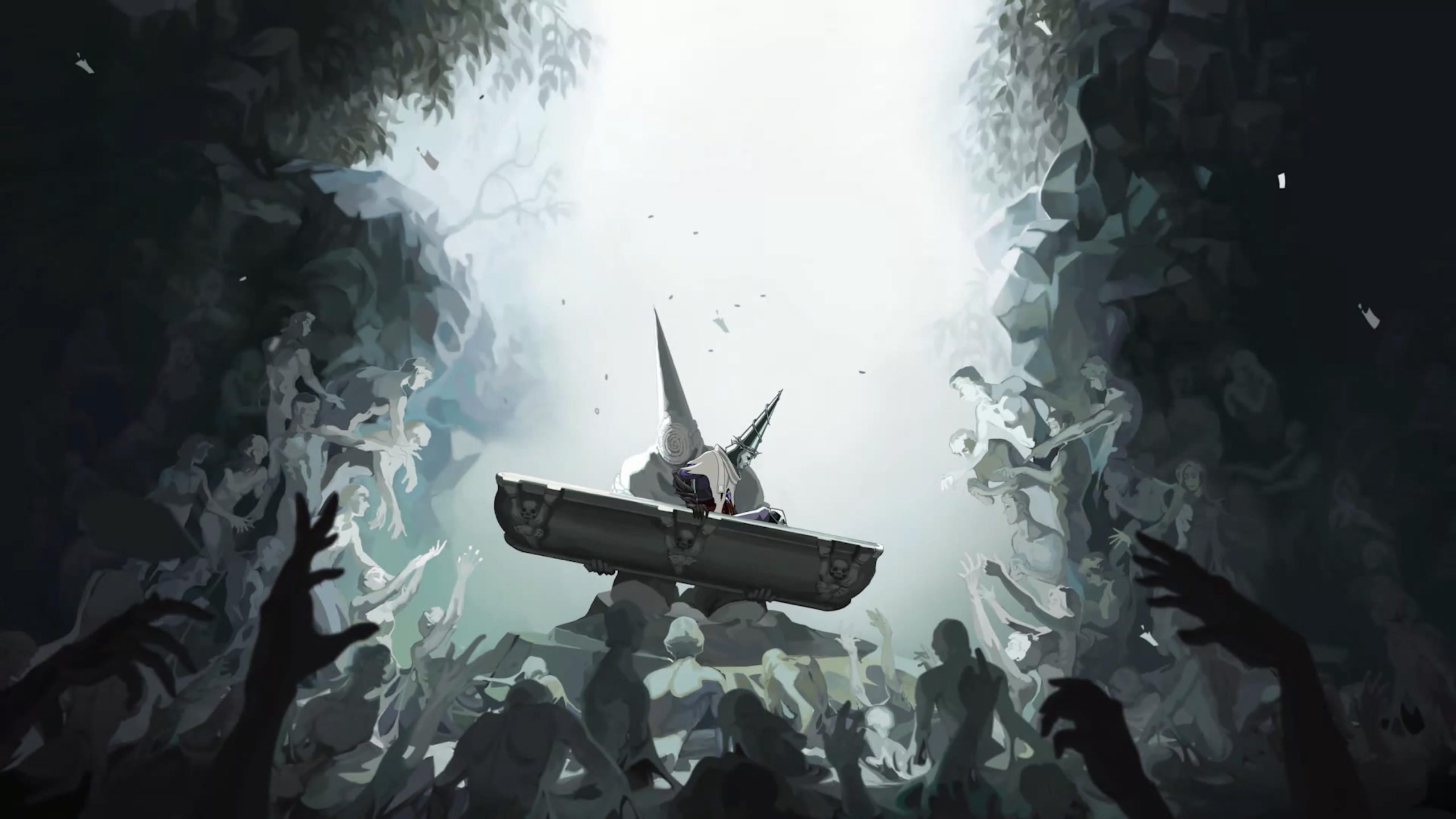
There’s a crack in the sky, with a pulsating heart beneath it and words of a new miracle child is to be born from it. The Penitent One must defeat those that guard it, to prevent the birth. The game draws great inspiration from Spanish Catholicism relating to the look of the protagonist, as well as some interpretations of the darker side of religion. The yearning for punishment from believers, endless suffering to those that have sinned and the ambivalent actions of an entity they call The Miracle.
Blasphemous 2 answers a lot of questions posed in the first game, though maybe not everything. Much like its predecessor, lore and story are cryptically spoken in grand fashion. There’s no convolution, but there are a lot of pieces to the puzzle, and they don’t often connect linearly. I’m dancing around specifics for spoilers, but I do think it’s not the end for The Penitent One and because of that, the ending was a little underwhelming. With that said, there’s so much lore to learn and decipher that my reading of the 1 out of 2 endings could be wrong. This is something I’m looking forward to post-release to hear other people’s thoughts about.
Bold in Blasphemy
Whilst there is so much to unpack with the story, I overall felt a depth that I’ve potentially only scratched the surface of during my playthrough. Surprisingly though, I don’t think it’s the primary focus despite its quality, as the gameplay is really the mass majority of the game. As I mentioned it’s a Metroidvania, sporting a labyrinthian map with all kinds of secrets to discover, some you’ll need to return to with new powers etc.
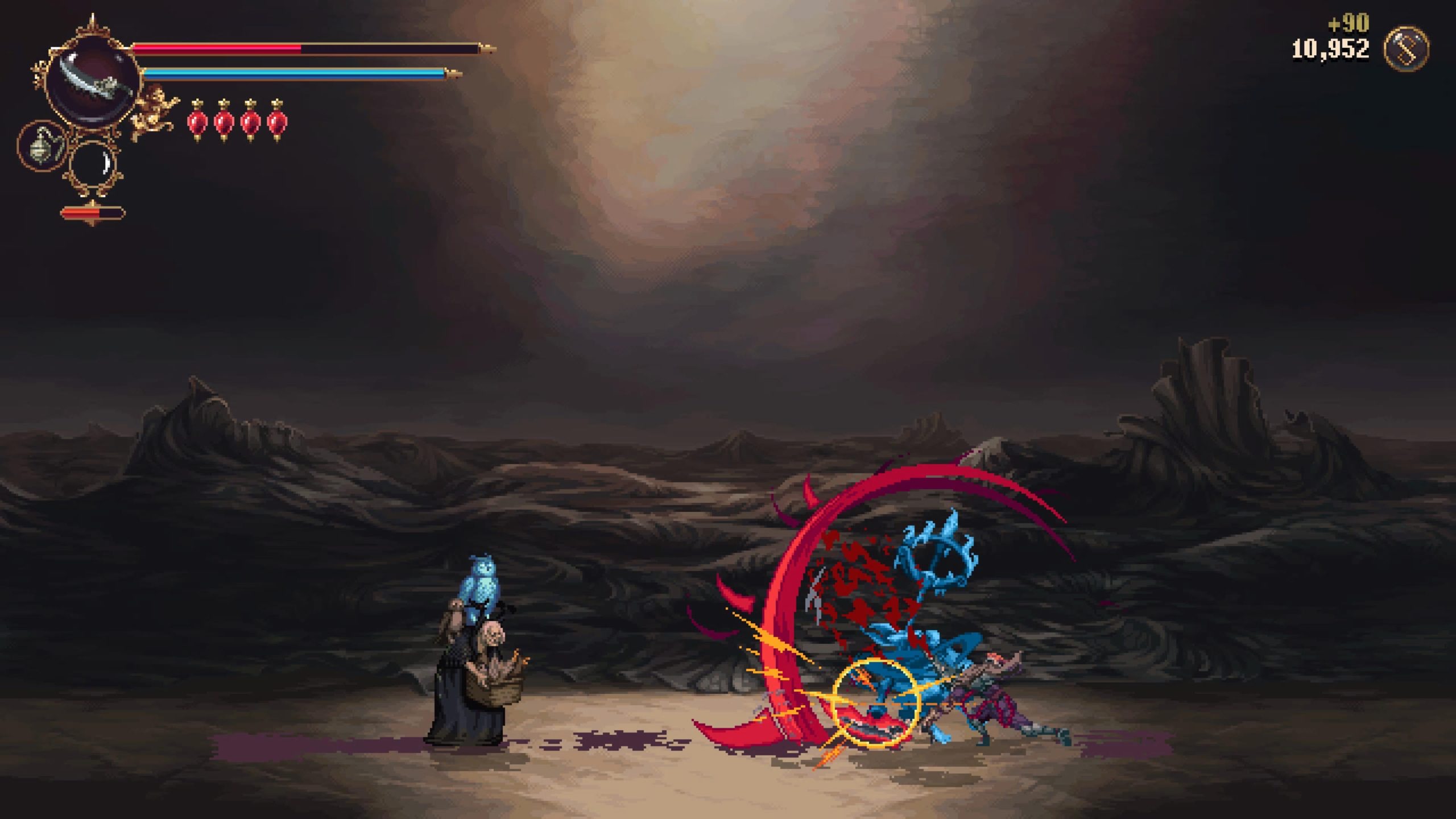
It’s a subtle change to some, but the way they’ve executed the traversal this time around is leaps and bounds better than the original. I remember one specific area where the floor was icy, causing The Penitent One to slide, whilst trying to fight – it was a nightmare. The Game Kitchen have done away with trivial means of traversal now and has honed in on pits, disappearing platforms and the three powers you gain. This has made for a much more succinct and rewarding experience when going back and forth through the new world.
At the start of the game, you pick one of three weapons – The Praying Blade, The Censer of Flame and The Rapier and Dagger. You will eventually have all three, as showcased in the trailers, as they’re integral to progressing through the map. Each has its own ability to help you discover secrets, and depending on which one you choose, leads you to your initial direction in the game. I was initially thrown off by this open approach, as I have a habit of chronic backtracking, but it’s a great way to let the player choose their path of penance.
Something Unholy
The choice of weapon isn’t just a traversal ability though, as they all have a different combat style. I started with The Praying Blade, balanced with the ability to parry and follow through with an attack. The Censer of Flame is slow with high damage and The Rapier and Dagger is agile with lower damage. Each has its own skill tree to enhance its combat abilities, damage output and the like. I had an excellent time with each weapon, all equally as in-depth with what you can pull off whilst feeling entirely different.
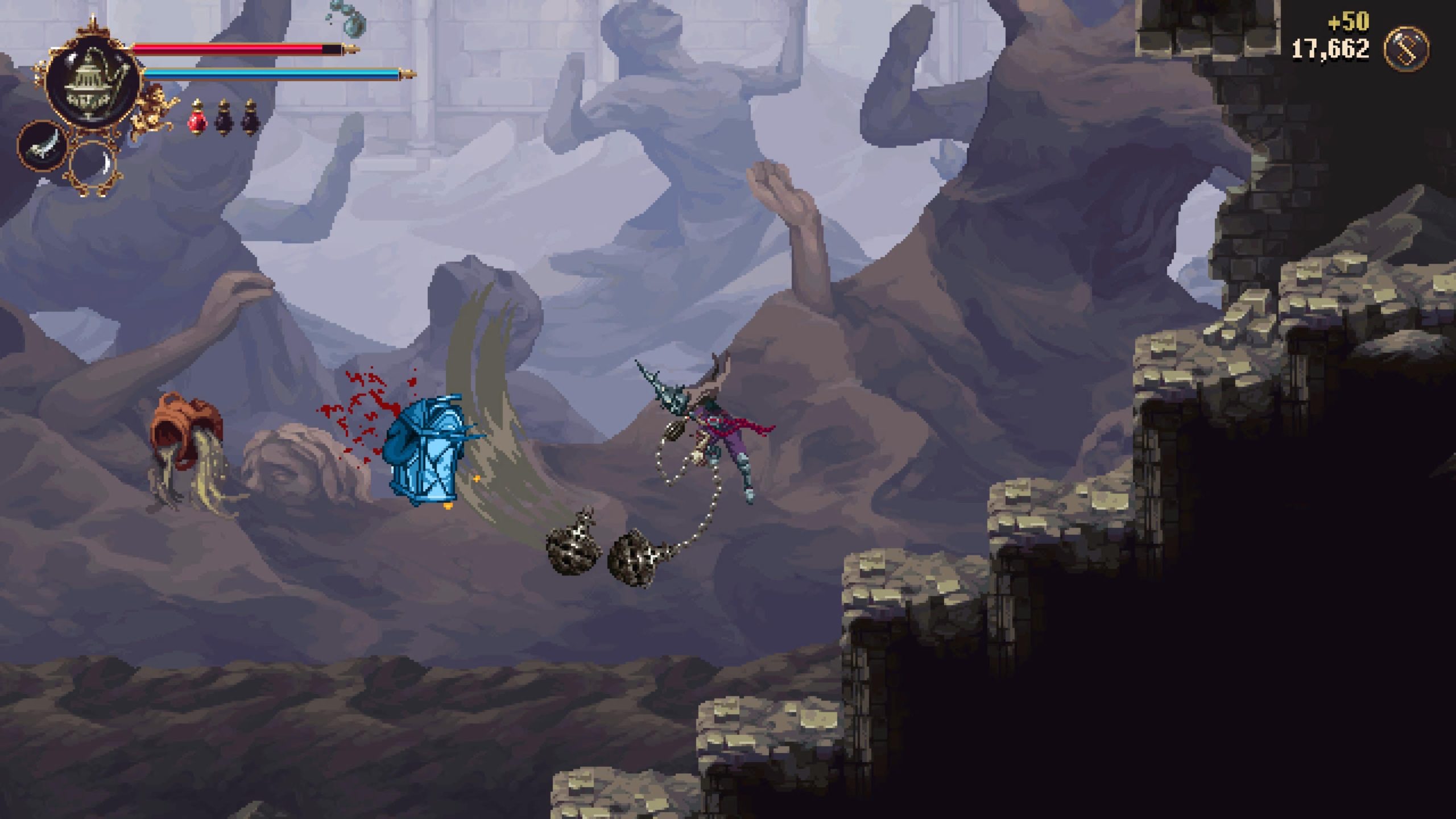
The combat has a hack-and-slash style to it, whilst retaining some of the Soulslike sensibilities. Enemies don’t die easily and hit equally as hard as you. Windows to either dodge or block are very small, making you more tactile in battle. Whilst I stuck to The Praying Blade during boss battles, I had a different favourite weapon for most of the enemy types around the map. Swapping between them is just a case of tapping L1, making the switch between engagements seamless, and I’m sure someone better than me could make mince meat pulling off combos between the three with astonishing results.
If you die, you return to a shrine that works as a checkpoint/savepoint, not losing Atonement Souls (currency), but you do gain guilt. Guilt plagues your Fervour bar which you use to cast your Prayers, which gives you an edge on your opponents. If you’re using it often, you’re using it right as basic attacks refill the bar. You spend Atonement Souls to replenish your Fervour unless you defeat a boss. There is a perfect risk and reward with every combat encounter with a weight to every action that exudes confidence in its own ability to be a thrilling challenge.
Scriptures of Power
Bile Flasks are what you use to heal in battle, which is similarly as finite as your abilities. It helps retain the focus of skill in combat whilst still having a myriad of ways to aid you. Outside of fighting, there are numerous collectables to find when you’re exploring.
The new addition is the Altarpiece of Favours. These are statuettes that you carry to increase a manner of abilities. Damage buffs for specific weapons, healing buffs or a critical hit chance increase. Pairing two of the right ones up gives an even stronger buff and it just adds to the depth of your customisation.

The rosary beads are back, they act as more defensive buffs for the most part, and you can mix and match to help you gain an edge in areas that you’re lacking in. There are also NPC quest lines that involve seeking out to finish them. I do think the NPC stuff is a little more streamlined to maybe create less confusion, but I liked not knowing what your actions meant for them in the original, good or bad.
I’ve got 99% of the map myself and I’m one collectable away to finish my potentially last quest line. This isn’t a brag but an endorsement that finding everything has been extremely fun, with just the right amount of difficulty to keep you going.
Sinfully Stylish
It’s hard not to recommend Blasphemous 2 on gameplay alone. The Game Kitchen hasn’t completely changed what they did with the original, but they’ve extended the capabilities and streamlined some of the bloat to make every facet feel flawless. Boss Battles this time is less about monstrosities hulking the screen for you to dodge projectiles and more of a 1 on 1 match of skill. These fights are much more satisfying and I’m glad that they have on focused more of them in the sequel. That’s not to say some do harken back to the original model, but there are far fewer of them.
Everything also feels more hefty and grounded. Moving, attacking and jumping all feel heavier, bringing a certain realism to an already well-realised world. It also shakes off some of that arcadey-ness the original had in favour of this, which speaks to some of that polish I’ve already mentioned. This brings me to the presentation. I’ve always admired the pixel art The Game Kitchen went for with Blasphemous and the team has seemingly turned it up to 11 with this.
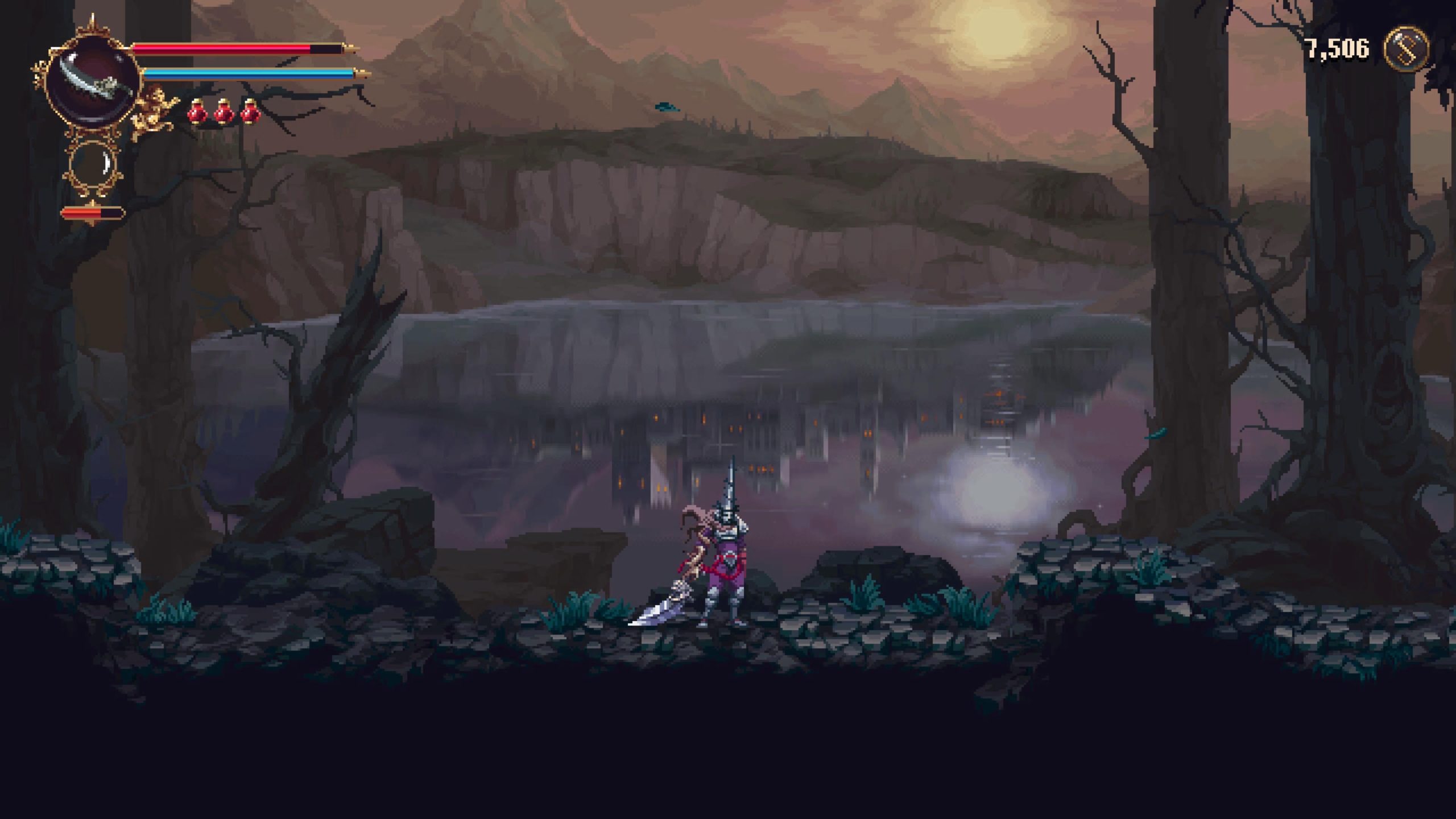
The deep richness of the colour palettes they use, with the wide scope of a variety of environments is honestly some of the best I’ve come across. No one place looks the same, each with a huge range of assets all unique to their own area. Charing through an area called the Choir of Thorns, seeing a palace lit by the moon as a reflection in the river, whilst wading through spiked vines is just one of the many brilliant examples of how beautiful this game is. Enemy types, and boss designs again are immaculate, incredibly ornate and fearsome.
The Psalm Before the Storm
This extends even into the animations of said enemies/bosses. One animation stands out in particular, as an old lady with her crows that she sends to attack. You kill her and as she crumples to the floor, her birds pick away at her until there’s nothing left. It’s a millisecond, but it’s so ghoulishly brilliant and there are so many other examples of this that didn’t have to be in the game but are. The devil really is in the detail for Blasphemous 2.
Then there is the accompanying music to all this, which is for lack of a better phrase, gospel. Potently ominous orchestral that just evokes the evil that lurks across the land, and when the Spanish origins of the game come through is when it shines. One area in particular has a Spanish guitar leading the song and it’s equally anthemic as it is beautiful. Having the music embrace the origins as well as using catholicism for inspiration really creates a distinct atmosphere that feels all-encompassing.
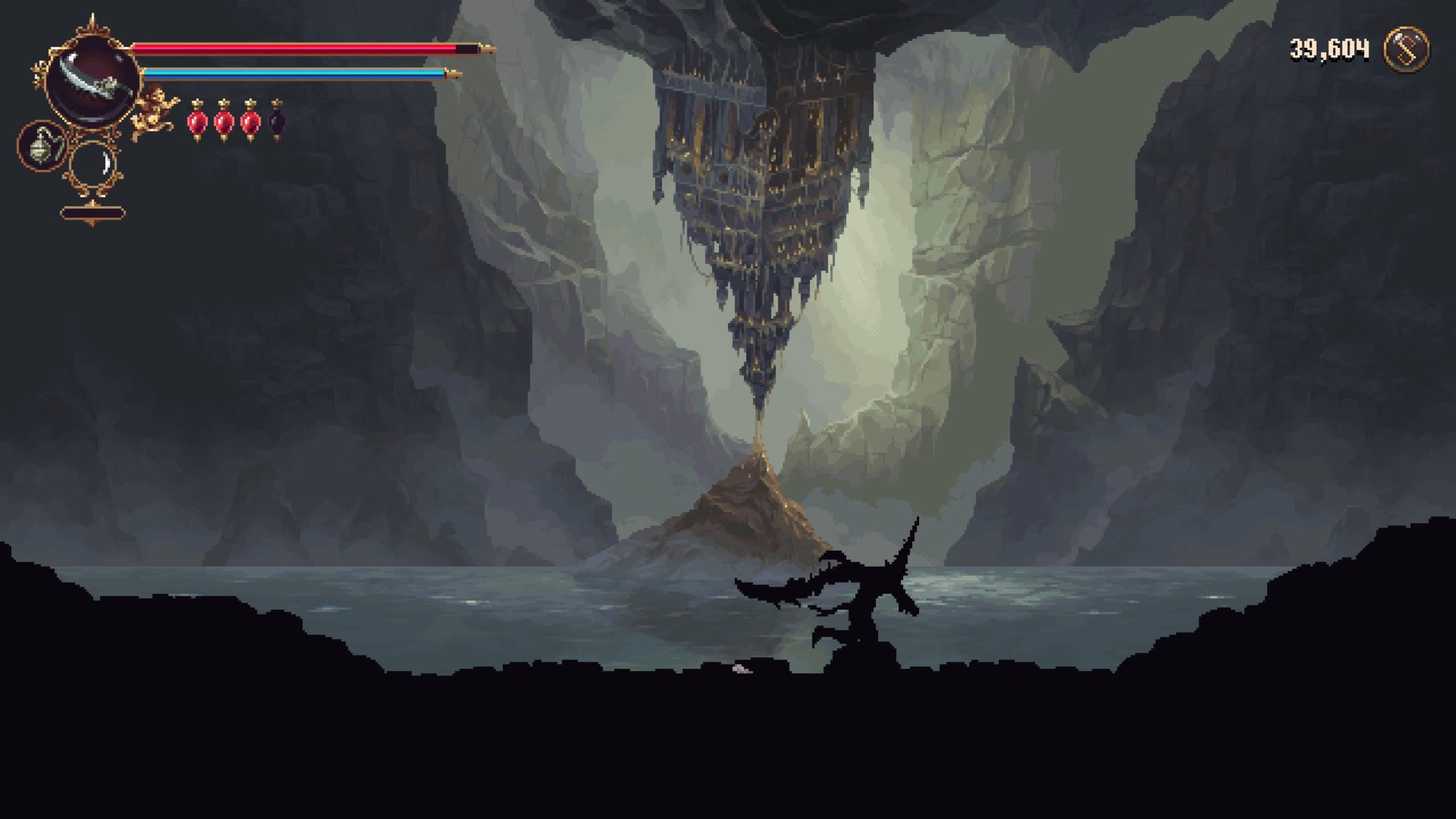
Overall, I’m immensely impressed with what The Game Kitchen has pulled off for a second time. Blasphemous 2 is a bigger, bolder and more confident game than its predecessor. This says a lot as the original is an already brilliant game, so expectations were already high. It’s not a complete overhaul, but why fix what isn’t broken? Combat is deeper, more satisfying. Exploring and seeking secrets are more cleverly implemented and a generally more enjoyable aspect and the presentation is even more glorious. Blasphemous 2 is everything a sequel could and should be and I implore everyone to play it. Maybe the first one too afterwards.
Blasphemous 2 is a near-flawless sequel that only improves on its own formula. The game is bigger, bolder and more confident in every facet. Combat is more diverse and brutal, the platforming more fulfilling and the presentation more enriched and hauntingly beautiful. One of the best 2D Metroidvanias that honours the Soulslike formula, whilst carving out its own path.

Blasphemous 2 will be available August 24th 2023 for PlayStation 5 (review platform), Xbox Series X|S and PC via Steam.
Developer: The Game Kitchen
Publisher: Team17
Disclaimer: In order to complete this review, we were provided with a promotional copy of the game. For our full review policy, please go here.
If you enjoyed this article or any more of our content, please consider our Patreon.
Make sure to follow Finger Guns on our social channels. Twitter, Facebook, Twitch, Spotify or Apple Podcasts – to keep up to date on our news, reviews and features.
